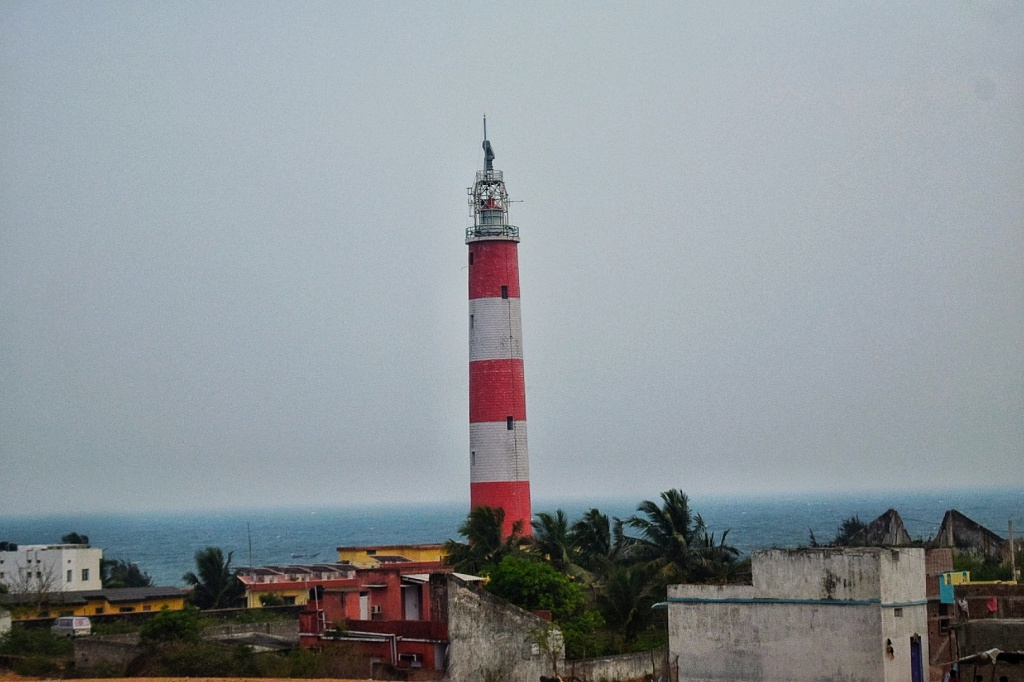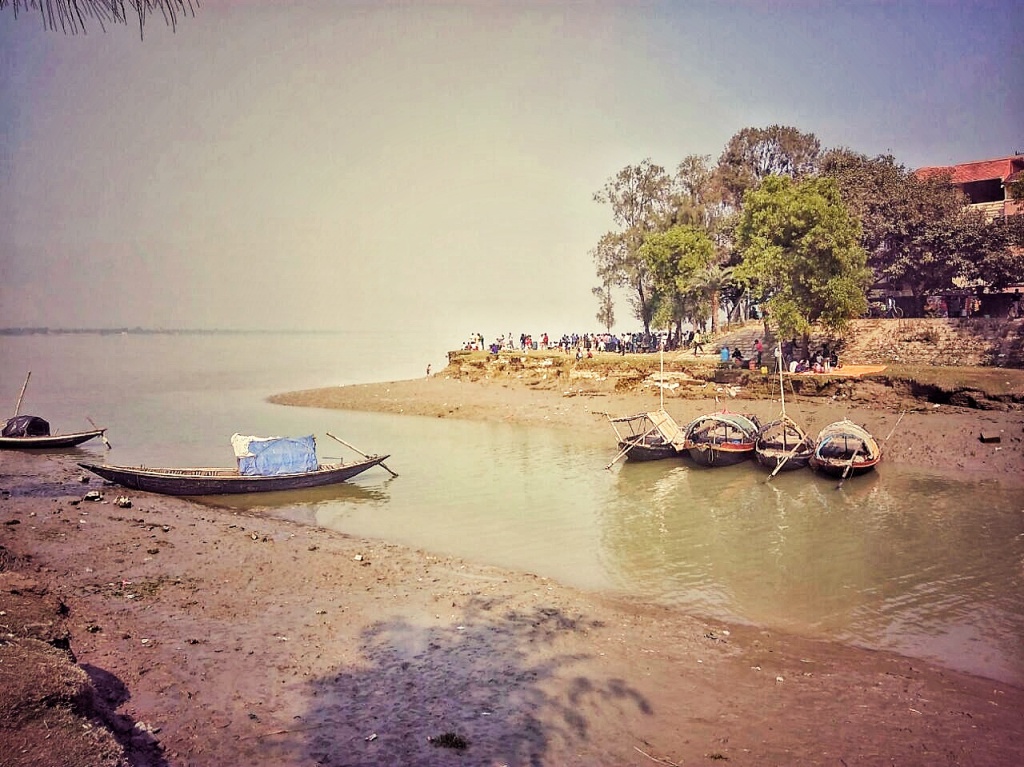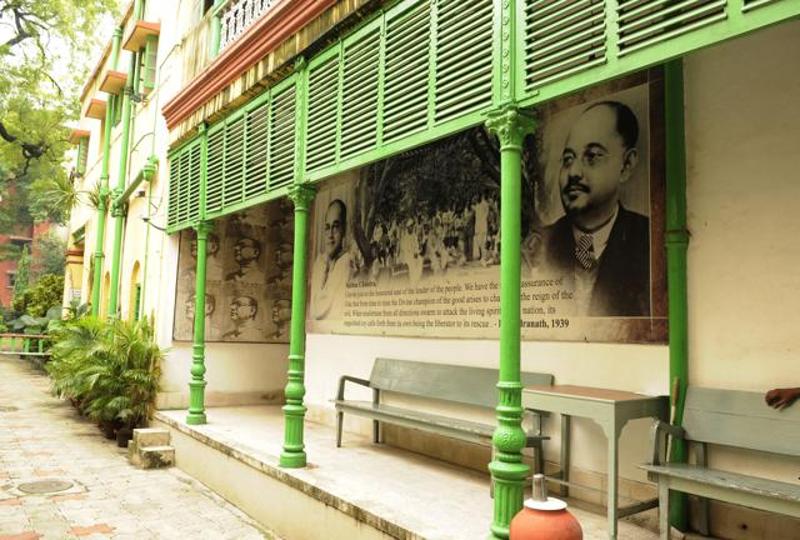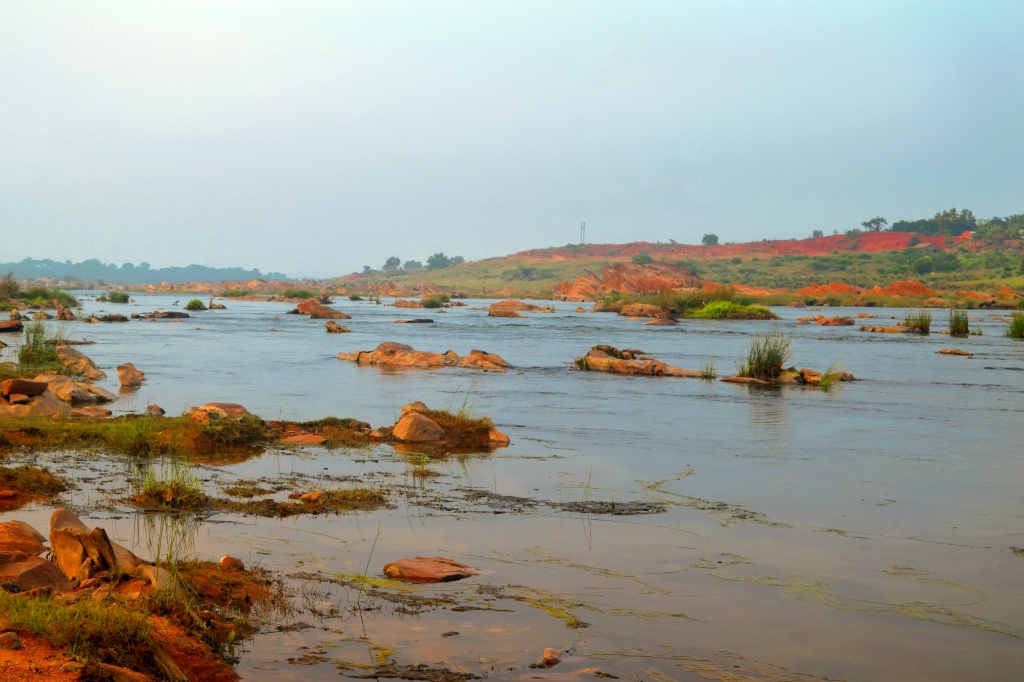Journey by train in any country is worthwhile for a traveller. Brought up by hearing whistles of trains from Sealdah, I began to explore my neighbouring destinations in Bengal from the late school days. I went for exploring Hooghly when I was in first grade of college years. Bunked from college classes, I, alone, stepped to Hooghly via Naihati. The local trains here seem very interesting, passing hundreds of stations. I made up my mind on a beautiful Monday to discover the heritages of Hooghly. Firstly, I stepped in Hooghly Imambara.
 Hooghly Imambara is an architectural splendour of 19th century. It is a holy shrine for Muslim community of India. This architectural splendor started in 1841, and was completed in 1861. It took about Rs. 31 lakhs at that time. It honours the western bank of Hooghly River. From the minarets of Hooghly Imambara, you see the Jubilee Bridge, which was designed by the Sir Leslie Bradford and constructed between 1882 and 1886. There are two minarets in Hooghly Imambara. From the minarets, you can see Hooghly River and district as well. With all, it whispers the glorious past of French and British colony.
Hooghly Imambara is an architectural splendour of 19th century. It is a holy shrine for Muslim community of India. This architectural splendor started in 1841, and was completed in 1861. It took about Rs. 31 lakhs at that time. It honours the western bank of Hooghly River. From the minarets of Hooghly Imambara, you see the Jubilee Bridge, which was designed by the Sir Leslie Bradford and constructed between 1882 and 1886. There are two minarets in Hooghly Imambara. From the minarets, you can see Hooghly River and district as well. With all, it whispers the glorious past of French and British colony.
 This mosque has the residing area of Imam, who is referred as the head priest of Islam community. It has a British clock on the top of the middle of minarets. This huge clock is positioned between the towers. It was brought from London at a cost of Rs 12,000. There also has the intricate artworks influenced from the Mughal miniature art. The texts of Holy Quran are carved out there. The colourful breathtaking chandeliers make this place colour in the midst of religion.
This mosque has the residing area of Imam, who is referred as the head priest of Islam community. It has a British clock on the top of the middle of minarets. This huge clock is positioned between the towers. It was brought from London at a cost of Rs 12,000. There also has the intricate artworks influenced from the Mughal miniature art. The texts of Holy Quran are carved out there. The colourful breathtaking chandeliers make this place colour in the midst of religion.
Hooghly Imambara was established in 1717 by a renowned Persian trader of early British India Muhammad Aga Motahar, before the Battle of Plassey. He arrived at Hooghly in the very first decade of the 18th century with his salt business. Muhammad Aga Motahar established a simple one-storied building on the land of present-day Imambara for residing with his family. In 1717 Hooghly Imambara was dedicated to “Nazargah Hossein”, the name of Allah. In 1735 Mirza Saleh-ud-din, his son in law added another building to it which was named “Tazia Khana”. Thus it emerged as Imambara to the Bengali Muslim community. It is said that the present Imambara has overlook the old construction.
 There are three fountains inside the Hooghly Imambara and a water tank. The locals say that the waters of the fountains are taken from the Ganga River through a long tunnel.
There are three fountains inside the Hooghly Imambara and a water tank. The locals say that the waters of the fountains are taken from the Ganga River through a long tunnel.
The evening here is pleasant. Behind the Hooghly Imambar, there is a sundial. In old times, it was regarded as the clock. Ganges is silently flowing beside Hooghly Imambara.
 While traveling in Hooghly, I stepped to Bandel Church , which is one of the oldest Catholic Church in the entire Bengal region, Hansheshwari Temple, Dutch Cemetery of Chinsurah, Clock Tower, and the French colony Chandannagore.
While traveling in Hooghly, I stepped to Bandel Church , which is one of the oldest Catholic Church in the entire Bengal region, Hansheshwari Temple, Dutch Cemetery of Chinsurah, Clock Tower, and the French colony Chandannagore.









Leave a comment